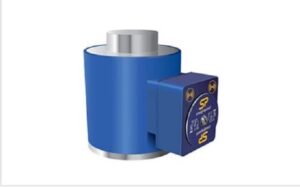
Load cells are an integral part in the world of weighing equipment.
Weights play a significant role in our lives, more than we might realize. Knowing the weight of a particular substance is the most accurate measurement for private and industrial spheres alike. For example, we use weights to price food at the grocery’s self-checkout line or know how healthy we are at home. Weights also indicate precise measurements for ingredients, agricultural products, medical products, and much more. How do we know what things weigh? Load cells save the day.
What Is a Load Cell?
A load cell is not a scale or a balance, but a transducer or sensor, which measures mechanical force and converts the energy of a force into a digital or analog measurable output. The force applied to the load is proportional to the strength of the output. A load cell can use different methods to translate force into a weight measurement. Majority of load cells use a controller or indicator that displays the electrical signals into a digital format that can be read. There are various ways of categorizing load cells, but one is to differentiate each type’s output signal. The most common load cell used in industrial weighing and the one that the Scale People specialize in are strain gauge load cells.
Types of Load Cells
- Hydraulic: A hydraulic load cell uses water or a liquid to measure the mechanical force of an object. A change in the pressure in the internal liquid translates into weight. One can place an object on the load cell, and the weight transfers to a piston that pressurizes the internal fluid.
- Pneumatic: Pneumatic load cells work similarly, but use clean air or nitrogen instead. They take relatively small weights and have multiple sensors for greater accuracy.
- Strain Gauge: A strain gauge load cell has one or more gauges that are at an equal state of resistance until a weight distorts it. The mechanical force will cause the gauges to transmit electrical signals that translate into weight information.
- Magnetostrictive: A magnetostrictive load cell contains layers of lamination. It translates weight through the change in permeability of its ferromagnetic materials. It is highly durable and used frequently in mills.
- Piezoresistive: A piezoresistor gauges weight through a change in resistance. When it senses pressure, it translates that change in pressure into a weight.
- Inductive & reluctance: Inductive and reluctance load cells function in the same way but inverted. An inductive load cell senses pressure put on its ferromagnetic core, while a reluctance load cell measures the air gap the load creates.
CONTACT THE SCALE PEOPLE FOR WEIGHING EQUIPMENT AND CALIBRATION SERVICES!
Since 1956, The Scale People have earned a reputation as the finest service provider for calibration and repairs of weighing equipment in the mid-Atlantic area. Our sales team can help work with you to find the best weighing equipment for your application. We currently have offices in Columbia, MD, and Newport News, VA, but we offer our services nationwide. Over the years, we have built up a long list of satisfied clients from a wide variety of industries, including pharmaceutical, food and beverage, and government manufacturing. We are a fully ISO/IEC 17025:2017 accredited service company offering calibration for balances, scales, dynamometers, force measurement, test weights pipettes, and more. All of our services have a 100% satisfaction guarantee. We’re only a phone call away at +1 (800) 451-9593. To learn more about what we do, follow us on Facebook, Twitter, and LinkedIn.
